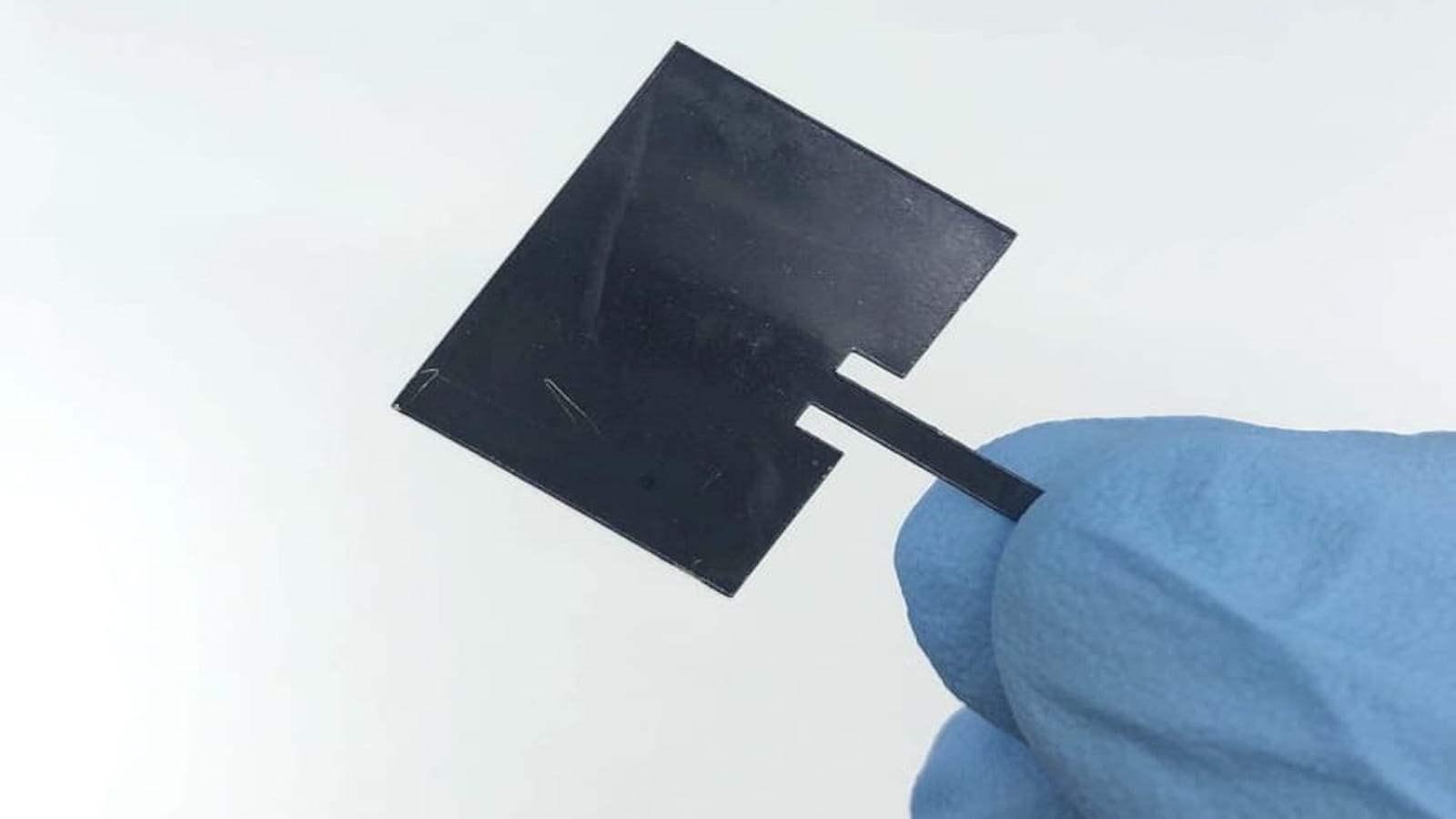Major MXene Conference Comes to Drexel

The mighty family of nanomaterials known as MXenes will star in a three-day international conference at their birthplace at Drexel on Aug. 1–3, 2022.
"MXenes: Addressing Global Challenges with Innovation" is expected to convene about 200 in-person researchers, students, investors and policymakers, along with hundreds more virtual attendees across the world, to discuss basic research problems and future applications for the novel two-dimensional materials. Since their discovery at Drexel in 2011, MXene materials have demonstrated unrivalled properties capable of improving everyday electronics and addressing global technological challenges in fields such as energy storage, water purification, electromagnetic shielding, communication, smart textiles and even medicine.
In response to growing interest in the material, organizers have planned four international MXene conferences/symposia this year. The August event will be the only one hosted at Drexel, which is home to the labs of the original inventors Yury Gogotsi, Distinguished University and Charles T. and Ruth M. Bach Professor and director of the A.J. Drexel Nanomaterials Institute; and Michel Barsoum, Distinguished Professor in the Department of Materials Science and Engineering in the College of Engineering. Masoud Soroush professor of chemical and biological engineering, is co-chairing the conference with Gogotsi and Barsoum.
Gogotsi explained why this conference is a milestone for the field of materials science with DrexelNow.
Q: So, what are MXenes?
A: They are a family of two-dimensional nanomaterials that have several atomic layers and are 100,000 times smaller than a human hair in thickness. In addition to being thin and light, they are made of a combination of several atoms which gives them a variety of properties. You can get any color, you can get metallic conductivity, semi conductivity, etc. They differ from graphene, the only other major material discovery in the past 20 years, because graphene sheets are monoatomic. The discovery of MXenes matter because everything is made of materials — cell phones, computers, solar batteries — and new materials allow scientists and engineers to utilize new properties and add new functionalities to devices, which opens up opportunities in communication, in electronics, in medicine, in energy storage, batteries, supercapacitors and more.
Q: Why is it important to continue cultivating MXene research?
A: Since their discovery at Drexel, MXenes have been researched by thousands of people worldwide.
MXenes are about the most transferable technology to come out of Drexel, and they're generating patents and licensing deals. We're studying applications from smart textiles to cancer treatment to kidney dialysis to antennas and electromagnetic shields. There have been companies launched to explore applications for them.
In general, it takes usually between 15 and 25 years for new materials to go from discovery to real-world applications. Always when you make materials in small quantities, it is expensive. Until we have a large amount of cheap but high-quality material, the industry will not start using it. Bridging this gap from lab-scale production to large-scale production is always one of the key challenges for new materials.
Chemical companies will not start producing tons and tons until someone wants to buy it. On the other hand, companies that make new gadgets, like cell phones or smart textiles, won't start large-scale production until they have reliable material suppliers. Still, new materials will eventually get into production if they enable major improvement of existing functions (e.g., charging time of a lithium-ion battery) or enable new functions,such as garments with embedded antennas, energy storage capability, body temperature sensors to provide heat in some areas and cooling in other parts, etc.
Some applications are longer-term. There is a medical device company called Nephria Bio working with MXenes to improve kidney dialysis to eventually develop a wearable kidney so people won't depend on dialysis machines. Making a wearable kidney is a very attractive and important goal, but clearly it takes time. Another key application of MXenes is for electromagnetic shielding, such as to eliminate the irritating noise that happens when you have two microphones near each other. Typically, people use metal screens, but we can prevent interference with film that's virtually invisible and extremely thin. Therefore, such shields can potentially be used in hand-held electronics, Internet-of-Things devices, etc., where size and weight are of importance. Companies, researchers and investors can use MXenes to solve many technological problems.
Q: Who should attend the conference?
A: The goal of the conference is to bring together companies, researchers, investors and doctoral or undergraduate students so they can learn and listen to leading experts in the field and select directions for future research. The conference chairs invited leading experts in the field to speak. The Japanese company Murata Manufacturing Corp., which is the largest producer of electronics for the automotive industry, will speak at one of the panels. We will have scientists from Manchester University in England, where graphene was discovered, speaking as well.
We will have editors of top journals like Nature Nanotechnology, Science, Advanced Materials, Matter, and Nature/Springer Publishing host a panel on how to publish on MXenes and what top journals are looking for — which is very important, especially for younger scientists, to understand. We will have a panel bringing together young scientists with National Science Foundation fellows who are working at Drexel and fellowship recipients coming from Africa, Europe and India, who will talk about their research in MXenes and how they ended up becoming researchers and winning very competitive fellowships.
We'll have a panel of investors and venture capitalists who will talk to the community about why and how they would invest in MXenes.
It's not purely about science. We will discuss bottlenecks in MXenes and their applications, we'll discuss publishing, investment, the careers of young scientists.
The local organizing committee, led by the Conference Secretary Jamie Banks, put a tremendous effort to organize an excellent event and create welcoming environment for all attendees, whether they are in person or joining us online. National Science Foundation support allowed us to cover the cost of attendance for a large number of students from U.S. universities.
COVID still prevents many other scientists from attending in person, but we made the conference hybrid, so there will be lots of people who will attend and listen online and there will be some pre-recorded presentations available to registered conference attendees.
Q: Why is it significant that the conference is being organized in MXenes' birthplace?
A: Our research team at Drexel put a lot of time and effort into the discovery and development of MXenes, and we're glad to see results. You grow a plant in your garden, and you see fruit, and you're happy because you planted the tree, and now you can pick apples.
Moreover, it's important to have conferences in the U.S. because even though we discovered MXenes here in Philadelphia, there was very little interest initially in the United States. The first licensing deal was with a Japanese company. The first international conference on MXenes happened in China. We are glad that companies and funding agencies in the U.S. have started to pay attention.
The fact that there's a second conference at Drexel, and there are two MXene symposia at the Materials Research Society meetings in the U.S. in 2022,shows there is a critical mass of MXene researchers in our country and I hope that this conference will attract further interest.The number of publications on MXenes, the number of citations, is going up exponentially. MXenes are frontier nanomaterials and as nanotechnology makes its way into every aspect of our life, we expect MXenes will enable many technological breakthroughs soon.
Drexel has a relatively small number of faculty active in the field of nanomaterials. We don't have a department of nanotechnology. We only offer MS degree in nanomaterials and we have the A.J. Drexel Nanomaterials Institute. Nonetheless, if you look at the latest ranking in U.S. News and World Report, Drexel is the No. 1 most impactful of all institutions in the worldin citations impact and percentage of highly cited papers that are among the top 1 percent most cited in nanoscience and nanotechnology, as well as materials science. It shows the impact and reputation of nanotechnology and materials research at Drexel, and it shows that Drexel has produced something that the rest of the world values. Now the nanomaterials field is looking at Drexel as a leader.
To attend the event in person or stream the panels and talks virtually, register at https://mxeneconference.coe.drexel.edu.
In This Article
Contact
Drexel News is produced by
University Marketing and Communications.

